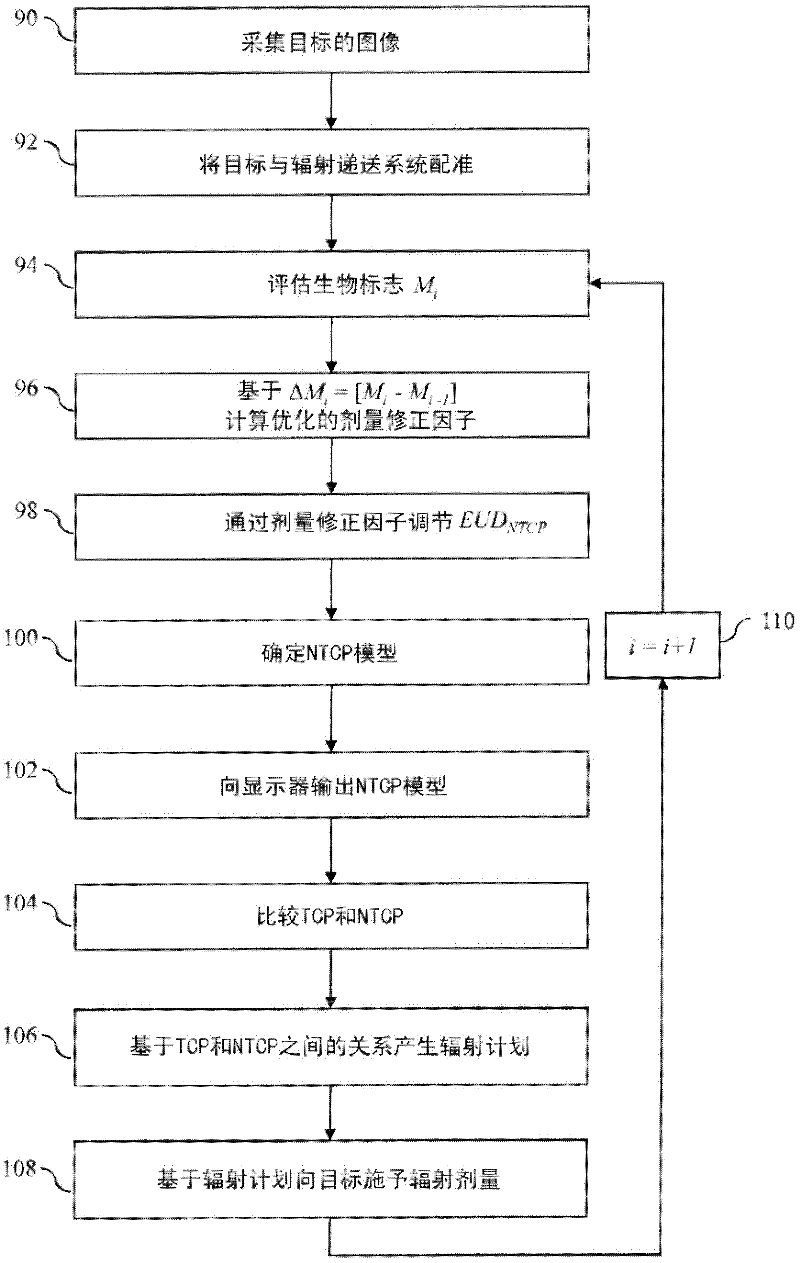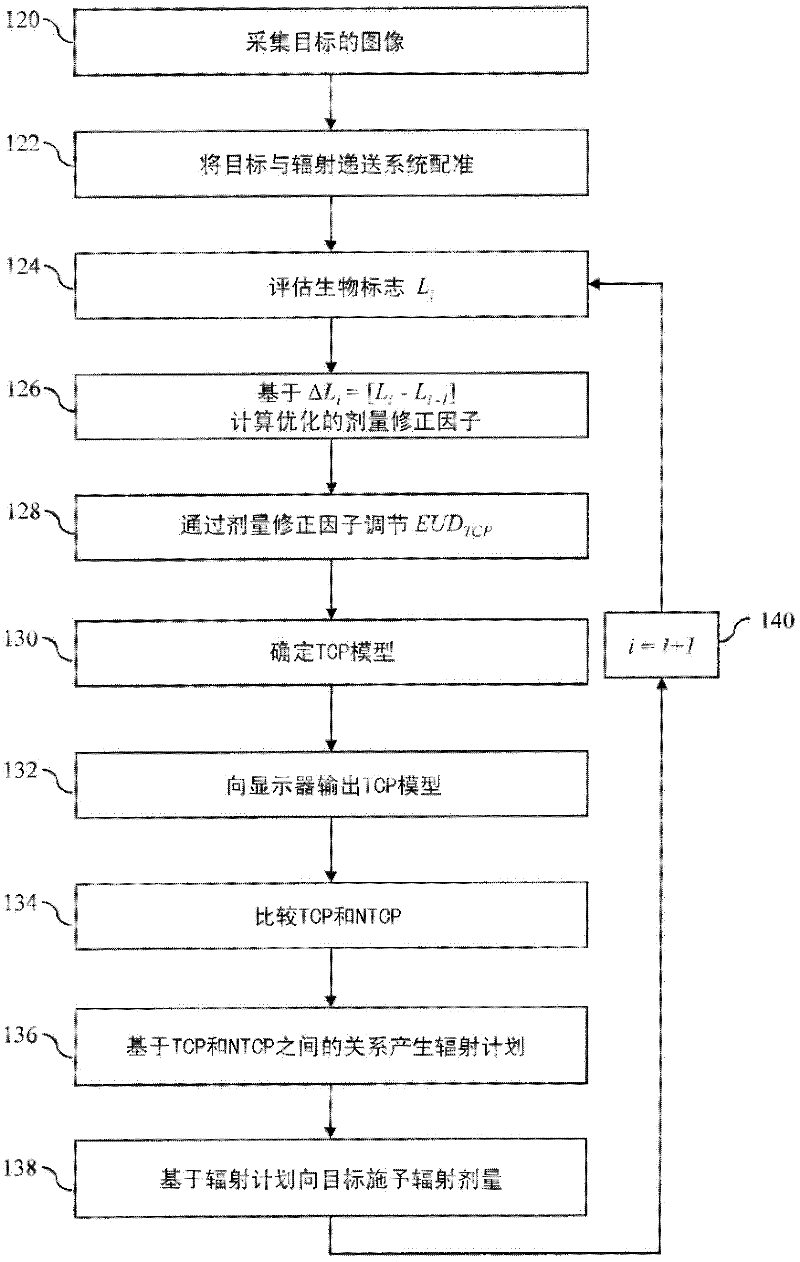Marker adapted normal tissue complication probability
A complication and tissue technology, applied in the field of treatment, can solve the problems of systematic inaccuracy of NTCP model, patient recurrence, and reduction of tumor control, so as to increase the probability of tumor control, reduce serious side effects, and reduce unnecessary recurrence.
- Summary
- Abstract
- Description
- Claims
- Application Information
AI Technical Summary
Problems solved by technology
Method used
Image
Examples
Embodiment Construction
[0032] The invention may take form in various components and arrangements of components, and in various steps and arrangements of steps. The accompanying drawings are for the purpose of illustrating the preferred embodiments and are not to be considered as limiting the invention.
[0033] refer to figure 1 A treatment system 10, such as a radiation therapy system, includes a diagnostic imaging scanner 12, such as a computed tomography (CT) imaging scanner, an MRI scanner, etc., for obtaining diagnostic images for use in planning a radiation therapy procedure. CT imaging scanner 12 includes an x-ray source 14 mounted on a rotating gantry 16 . X-ray source 14 generates X-rays that pass through examination region 18 where they interact with a target area of a subject (not shown) supported by support 20 within examination region 18 Locate the target area. The X-ray detector array 22 is arranged to receive the X-ray beam after it passes through the examination region 18 where ...
PUM
 Login to View More
Login to View More Abstract
Description
Claims
Application Information
 Login to View More
Login to View More - R&D
- Intellectual Property
- Life Sciences
- Materials
- Tech Scout
- Unparalleled Data Quality
- Higher Quality Content
- 60% Fewer Hallucinations
Browse by: Latest US Patents, China's latest patents, Technical Efficacy Thesaurus, Application Domain, Technology Topic, Popular Technical Reports.
© 2025 PatSnap. All rights reserved.Legal|Privacy policy|Modern Slavery Act Transparency Statement|Sitemap|About US| Contact US: help@patsnap.com



